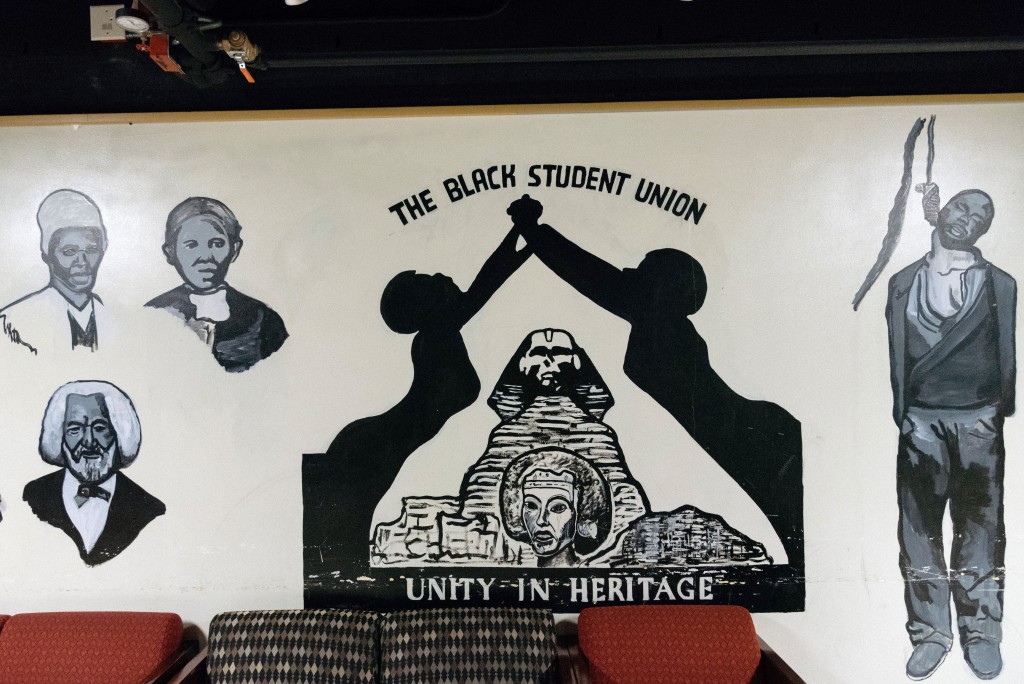
Slowly canvassing the Union, Release continues to review Binghamton University’s finest — and most unrefined — wall art.
The Ping Pong Room (Room 029 in the Undergrounds)
We use the word “mural” very lightly here. Dictionary.com defines a mural as “a large picture painted or affixed directly on a wall or ceiling,” and while this piece of “art” fits the definition, some colorful circles and randomly placed lines don’t quite do it for us. The centerpiece of the mural is a ping pong player clad in some striped ensemble with a semblance of Pantone 342. Odd patterns aside, the most notable thing in this mural is his weirdly defined leg muscle. Seriously, who painted that? It’s uncomfortably visible on the left thigh and also above the right knee; the latter “muscle” definition looks more like extra white pants material than anything else. It’s also sad to see that this determined player never got a nose, but instead a large black triangle. Eliciting imagery of Scarecrow from “The Wizard of Oz,” it’s honestly pretty terrifying. Also, this man is clearly unable to smell the delicious vegan dishes coming from the nearby Food Co-Op. The shapes surrounding the man look like a kindergartner’s poor attempt at a Kandinsky-inspired art project. That or the weird wall decals that were always advertised in Pottery Barn youth catalogs. We’re sure this design had a purpose, and it seems to be an attempt to recreate a bouncing ping pong ball. However, it ended up just looking like concentric circles made up of poorly saturated colors. Don’t waste your time on this mural; ping pong isn’t worth it.
Black Student Union Lounge (Room 006 in the Undergrounds)
Around the corner from the ping pong disaster is a historical tribute to black achievement, located in the Black Student Union’s lounge. The mural was created around 1968 when the lounge was first established. The timeline, painted in black and white, features historical figures from Egyptian queen Nefertiti all the way to South African revolutionaries Nelson and Winnie Mandela. The mural also showcases other icons in African-American history, including slaves breaking from their chains, portraits of abolitionists Frederick Douglass and Harriet Tubman and members of the Buffalo soldiers, an all-black cavalry established during the Civil War. What’s great about this mural is that it’s not only visually appealing, but its cultural significance is a refreshing look on Binghamton University’s walls. Additionally, BSU has an equally impressive, albeit more colorful, mural in their office on the third floor of the New Union that’s worth checking out.


